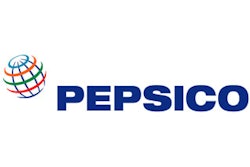Industrial and laboratory OEM designers are constantly being challenged to come up with more versatile, user-friendly, light weight and cost-effective product solutions for their equipment and instrumentation. An important component in this design process is the selection of tubing connectors for the transfer and management of fluids and gases, particularly for mission-critical applications.
Although metal tubing connectors have been traditionally employed in industrial and laboratory markets, plastic connectors continue to supplant many that were previously metal, not only because of their increased options for design flexibility, improved ergonomics, reduced weight and lower cost, but also for their ability to effectively meet stringent industry standards in diverse and harsh environments. Many features of plastic connectors, which have been long proven in critical medical equipment design, are now being integrated into a broad spectrum of industrial equipment and laboratory instrumentation.
But choosing the right plastic connector can be a challenge. Plastic connectors offer more options for material selection, user interface and customized design than metal connectors. A basic understanding of the options available with plastic connectors will help the OEM to specify the most optimized features to achieve peak performance in the equipment or instrument being designed.
Application Driven
While plastic connectors effectively fill many roles, they may not be suitable for all laboratory and industrial uses. Brass, aluminum, die-cast zinc and stainless steel connectors are designed for extreme durability and high-performance fluid handling, particularly when influenced by high pressures and high temperatures. Choosing the most ideal connector first requires a careful assessment of the application. Following are the prime factors to be considered:
Temperature Range – the minimum and maximum temperature tolerances that the connectors will need to function within. Depending on connector material, temperature tolerances can range from -40° F to 200° F and above;
Pressure Range – determining the minimum, maximum and working pressures that the connectors will be expected to tolerate;
Flow Rate – assessing the required volume per minute, and the effect of fluid pulsation, and modulations from connect and disconnect forces;
Media – the viscosity, sensitivity and corrosiveness of the fluid or gas moving through the connection;
Exposure – degree of impact from external or internal conditions, such as UV, wind, dust, vibration, radiation, gases, water submersion, chemicals or cleaning agents, and mechanical stress;
Specialized Environments – for food and pharmaceutical grade manufacturing, including wash-down, cleanroom and aseptic environments, and vacuums;
User Interface – level of human contact expected with the system and connectors;
Cycle Life – anticipated maintenance and changeability required to be performed on the system, and expected longevity of the system in operation.
The requirements of the application will then determine what materials would be best suited for the connectors.
Plastic Connector Materials
The material chosen for plastic connectors should be based on the mechanical requirements of the connector and the type of media that will be moving through the system.
Significant pros and cons need to be weighed in the selection of connector material. Mechanical properties such as toughness, ductility, impact strength, transparency, lubricity, temperature capability, ozone resistance and UV compatibility need to assessed when selecting the most functional material for the application.
The media is critically important. The type of fluid or gas flowing through a connection can affect the strength, surface appearance, color and performance of the connection. And, conversely, the wrong material can adversely impact the media.
Careful consideration needs to be addressed to chemical compatibility and the most appropriate plastic resin for the application.
Made from high-purity resin materials for use with aggressive chemicals found in most industrial and manufacturing plants, plastic connectors offer broad chemical compatibility. Many are manufactured from virgin resins, with accompanying certification of lot traceability.
A broad spectrum of plastic resins can be selected from to produce connectors, each with different characteristics to match the needs of system designers. These plastic resins are commonly used for producing connectors:
Polyethylene – chemically resistant, translucent or opaque thermoplastic with low temperature impact, which can withstand a variety of application environments;
Polycarbonate – hard, transparent thermoplastic with moderate chemical resistance. It provides good impact resistance and superior dimensional stability;
Polypropylene – soft thermoplastic that is highly resistant to chemical attack from solvents and chemicals in harsh environments;
Polyamide (Nylon) – versatile thermoplastic with good wear and chemical resistance, low permeability to gases and performs well at elevated temperatures;
ABS – tough thermoplastic with good stiffness and impact resistance even at lower temperatures, as well as good dimensional stability and high temperature resistance;
Acetal – strong and lightweight thermoplastic that provides high strength and rigidity over a wide range of temperatures;
PTFE – fluoropolymer resistant to most chemicals and solvents, with stability at high temperatures;
PVDF – thermoplastic that is mechanically strong with good ductility over a broad temperature range, as well as having excellent chemical resistance.
After the most appropriate material for the production of the connector is determined, the type of connection that best suits the laboratory or industrial need can be assessed.
Tune into Friday’s Chem.Insider Daily for part two of this two-part piece. For more information, please email [email protected] or visit www.valueplastics.com.























